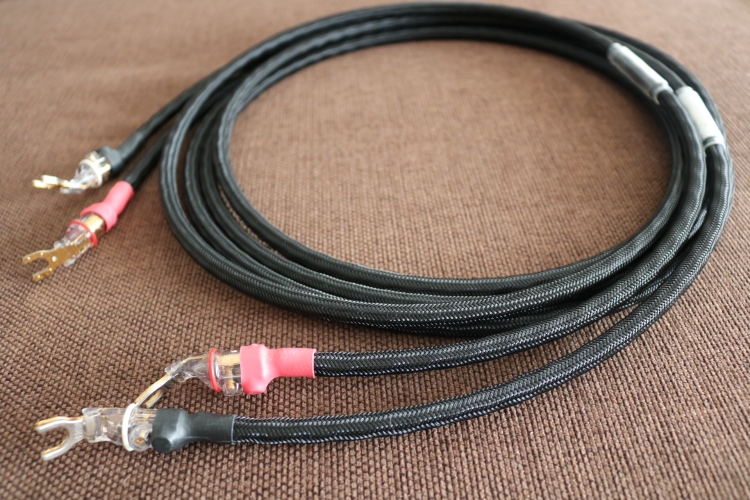
Review samples supplied by HVP Audio
Retail prices in the Netherlands:
Trinity 2x 2,5m: 2235 euro
Duality 2x 2,5m: 3660 euro
No. 3
When I reviewed the Marten Mingus Quintet loudspeakers in May 2017 Dutch distributor Hans van Put of HVP Audio also delivered a range of Jorma Audio cables. When the review was complete, I held on to the relatively affordable no.3 speaker cables. I’ve not done a separate review on these cables, but I really should have. As it would turn out time and again, these cables provide a super-transparent view on the musical performance as offered by the connected components. As such, they proved to be the perfect reviewing tools for me. While perhaps a little thin and, at times, a little dry, their utter neutrality and amazingly high levels of refinement and resolution quickly established them as my favorite cables for reviewing purposes as well as for day-to-day listening. The best part is that in spite of their immense transparency, they never sound hard or edgy. For the two years that passed since then, I heard various other cables, and while some provided interesting alternate perspectives, none of them made me switch over.
When I started using the No. 3 cables, I was still deciding what speakers to get. All I knew was that it would have to be something completely different from the various Apogee magnetostatics that I had been using for so long. After trying and reviewing a range of speakers, Wilson Audio Watt/Puppy 8’s were the ones I settled with and the No. 3’s again worked just perfectly. Recently, I moved to Kroma Audio Carmen loudspeakers and, again, the Jorma cables worked just great. As part of the delivery of these speakers, Ben of Harmony Audio Import also loaned me a pair of Furutech Nanoflux cables. Having heard the Kromas with these cables, I had to admit that there were some areas in which the Furutechs were clearly better. That’s fair enough, of course, as they are more than three times as expensive. By this time, Jorma had released updated versions of the No.3 as well as of some other models. So, I thought, this would be the perfect timing for reviewing some more Jormas. I contacted Hans, and he was more than happy to supply the review samples.
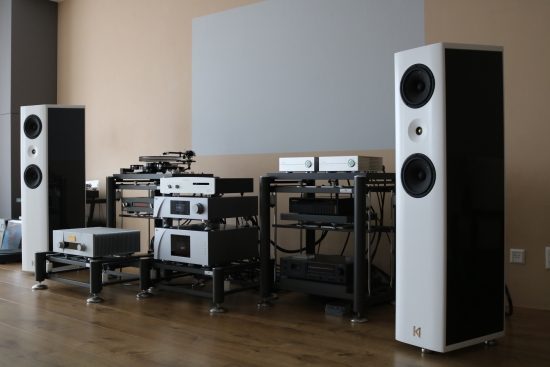
I appreciate how the new names Duality and Trinity are very different from the old names No.2 and No.3, yet they still make perfect sense. It remains immediately apparent which is which and that is always a good thing.
The No. 2 and No. 3 have been in production for over a decade. Jorma Audio is not a company that issues new models every two years. They make every cable perform to the best of their ability and only release an update when found worthwhile, repeatable, and time-tested improvements.
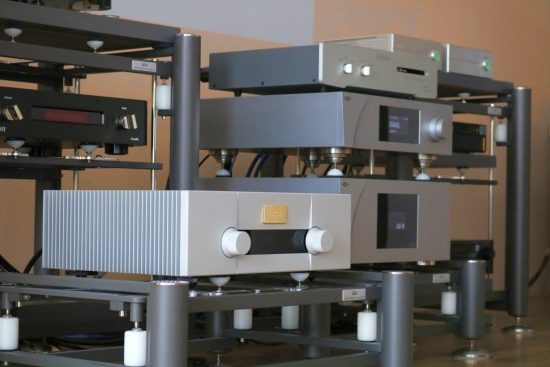
The Jorma Duality and Trinity will be reviewed using my usual system consisting of the CH Precision C1 DAC straight into the A1.5 power amp as well as using the Goldmund Telos 590 integrated amplifier and its built-in DAC section. In both cases, I use the Kroma Carmens. Although the Goldmund and CH Precision products are voiced differently, the three cables behaved entirely consistently. Therefore, the differences noted between the cables below are equally applicable to both systems.
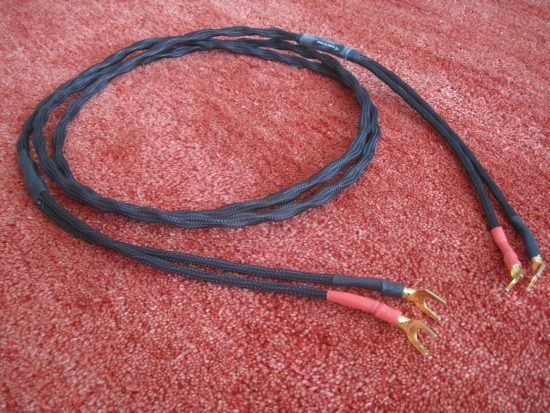
The older Jorma No. 3 had the plus- and minus leads intertwined. With Trinity, they are now separate leads from end to end.
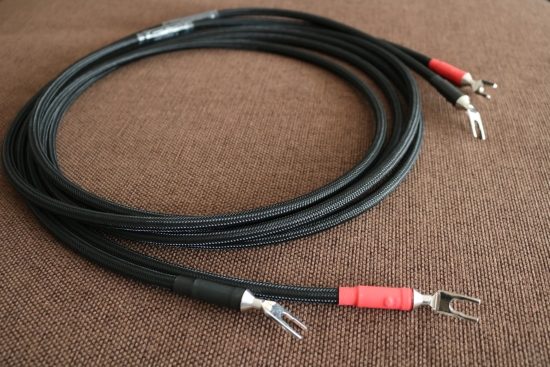
The new Trinity is built much more solidly, has separate leads from end to end, and upgraded spades.
No. 3 to Trinity
The main strong aspects of the Furutech Nanoflux cables compared to the Jorma no. 3’s are the filling out the body, texture, and richness of instruments as well as the long decays, i.e. the reverbs lingering on rather than being prematurely cut off. They are also smoother and warmer, but I would classify that only as different, not better. The no. 3’s, however, are better in terms of pacing, immediacy/transient attack, and bass articulation. So, how does the Trinity compare?
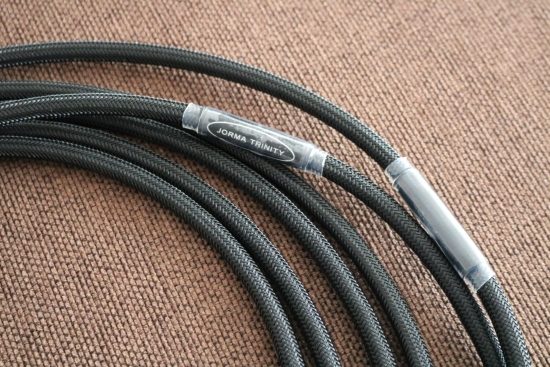
The new Trinity’s are, thankfully, not an entirely different product than the No. 3’s. Instead, they build on these cables’ existing strengths and further improve on them. Retained in the Trinity is all of the No.3’s tightness, articulation, immediacy, transparency, and attack that made me like them so much. Added to this is a more confident delivery with more solidity in the bass and more fullness of timbre overall, along with better fleshed-out textures throughout the frequency range. With the new cables, the bass is supremely articulate but also full-bodied and powerful, the midrange crisp and clear but also tonally rich and the treble still airy and fluid but also more crisply differentiated. In terms of resolution, the No. 3 was already extremely good, but the Trinity manages to be more precise as well as more acoustically convincing and, consequently, more musically engaging. In obtaining more solidity, fullness, and texture while retaining all of the No. 3’s strong qualities, the Trinity, for me, lands precisely in the sweet spot.
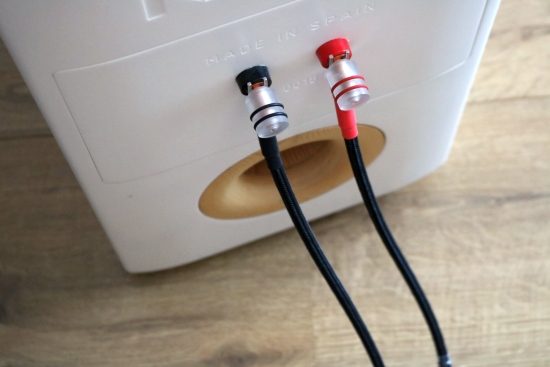
The most easily discernible qualities that you notice when moving up the ladder of the Jorma products are that the sound becomes more colorful, more luxurious, and more refined. The delivery gains a more engulfing quality and is emotionally more captivating. A similar thing applies here but to a product that remains in the same price class, and that is commendable.
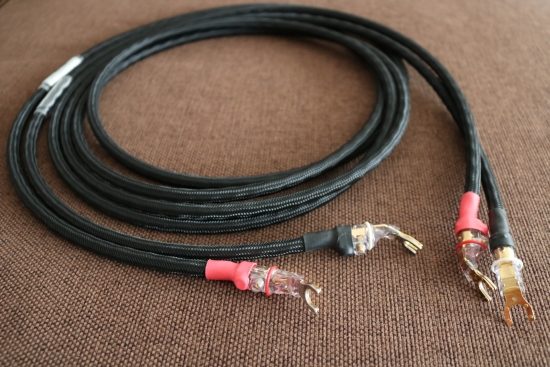
Trinity to Duality
The Duality is the successor of the No. 2, and it is placed higher in the ranking order than the Trinity. While the Trinity has what looks like Rhodium-plated solid metal spades, the Duality is outfitted with WBT 0681 NextGen spades. These use a sandwich construction of a pure copper conductor and a metal top layer with a compliant synthetic rubber material in-between. This enables the spades to be fastened with evenly distributed pressure and prevents overtightening.
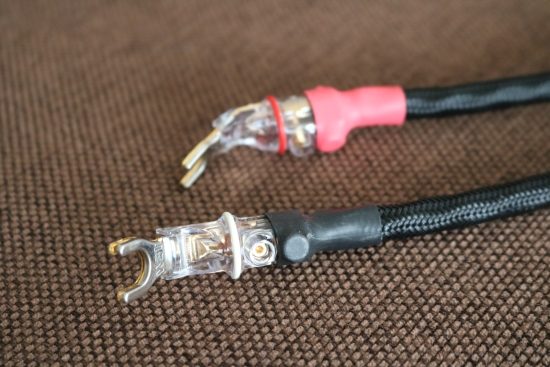
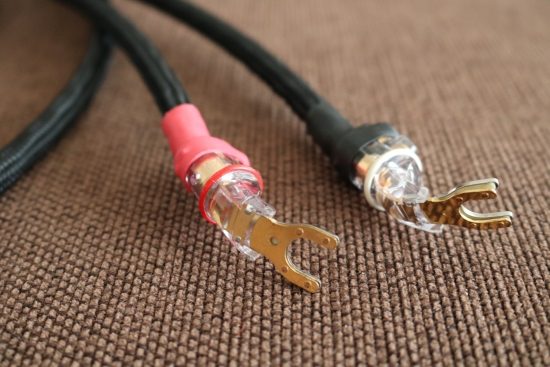
I don’t have the No. 2 at hand for comparison but the Duality sounds richer and smoother, as well as slightly darker than the Trinity. It’s not just a “warmer” cable, though. The Duality has a wider and more enveloping soundstage and also offers further gains in fluidity, low-level resolution, and ultimate refinement. The difference really is not at all subtle. Indeed, after listening to the Duality for a while, the Trinity sounds considerably soberer, more matter-of-fact, and less magical, if you will. However, while the Duality is just as tight and articulate as the Trinity, I do find the Trinity to be a little bit more explicit in its transient behavior and therefore a little bit more energetic overall. This will be a bit of an opinion-divider. Some people may prefer the snappier delivery (I do) and others may prefer the gentler approach (some of my friends do).
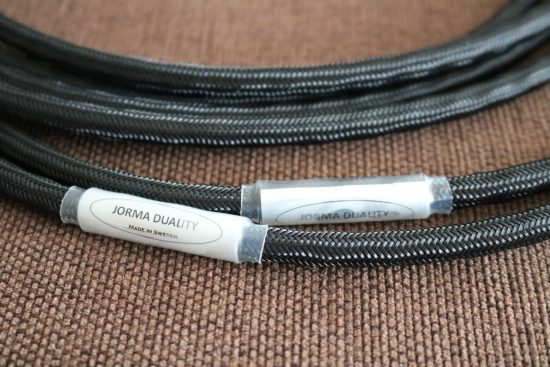
The Duality is closer to the Furutech Nanoflux’s sound in terms of smoothness, sustain, decays, and fullness of body than the Trinity, but they are still easy to pick apart. The Furutech house sound is still rounder and meatier, arguably too much so, and slightly less articulate and direct than the Jorma Audio. Another noticeable difference between the two cables concerns the soundstage depth or the amount of “throw”. The Furutech has a wide and relaxed, behind-the-speakers kind of delivery while both Jorma cables image in a more focused manner and more in line and in front of the speakers.
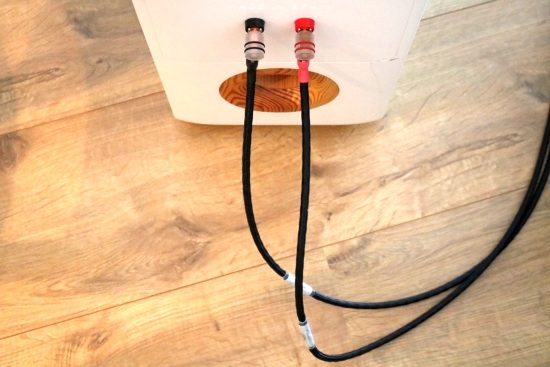
While smoother and richer than the Trinity, the Duality is certainly not overly creamy. In fact, the cable is still very precise and, depending on the system, can even come across as a little dry in comparison. However, I really would not characterize them as such. It’s just that Furutech cables tend to be incredibly smooth, too much so even, in certain pairings. The Jorma is precise and articulate yet also quite smooth, very fluid, and extremely agile.
By now, I think it will be clear how much I like these cables and it will probably not come as a surprise that I replaced my No. 3 with the Trinity as my reference loudspeaker cable.
Conclusion
I’ve been a fan of Jorma cables since the first moment I heard them. Even more so than before, the new models combine audiophile aspects such as transparency, resolution, and transient speed with an utterly natural and organic delivery that is entirely free from edginess or hardness. Which of the two reviewed cables will be best for any given system will depend on the sound balance of the system and user preferences. The Duality is clearly a better cable than the Trinity. But my Kroma loudspeakers are quite full-bodied and tonally rich themselves, and they work best with very direct-sounding electronics and cables. That’s why I prefer the Trinity over the Duality for this system. But I suspect that the Duality will absolutely work magic with speakers of the cleaner sort such as Magicos or, indeed, Martens.

(Trinity Speaker Cable)
External Links
Manufacturer: Jormaaudio
Distributor for the Benelux: HVP Audio
Read Also
Jorma Audio AES/EBU Digital Cable
Jorma Audio Origo interlinks and speaker cables (as part of Mingus Quintet review)

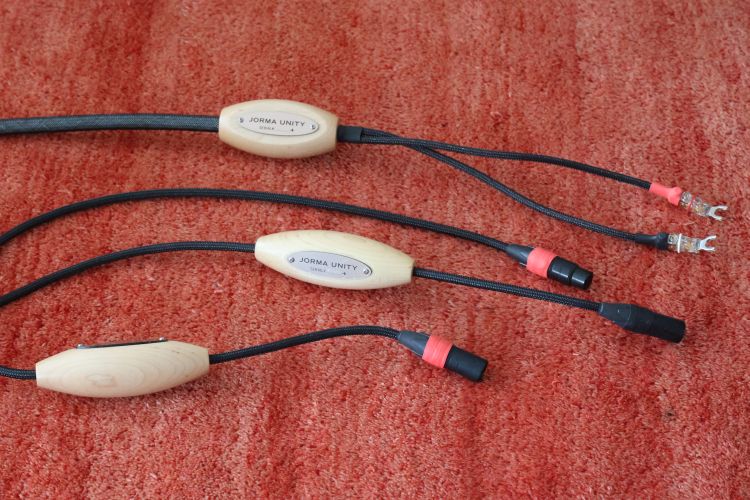
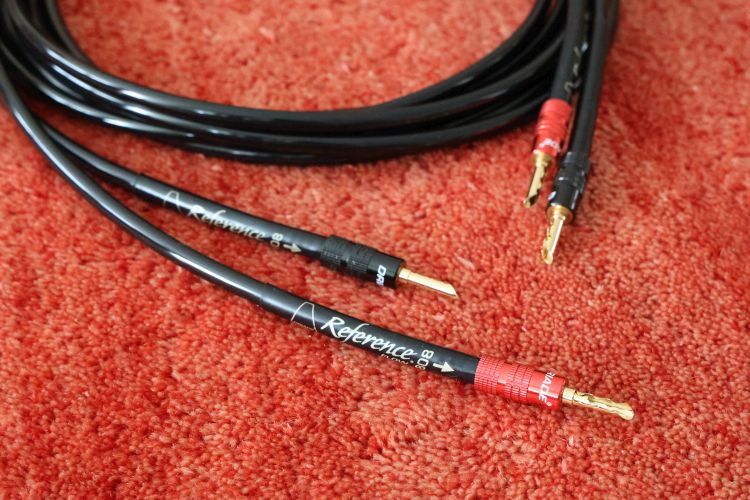
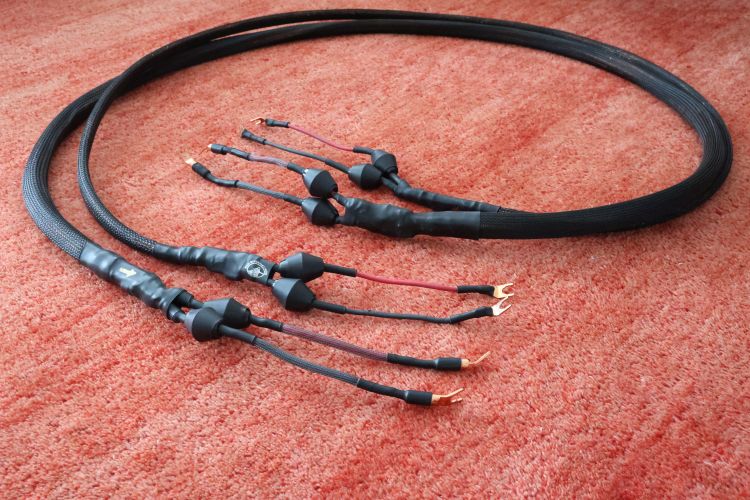
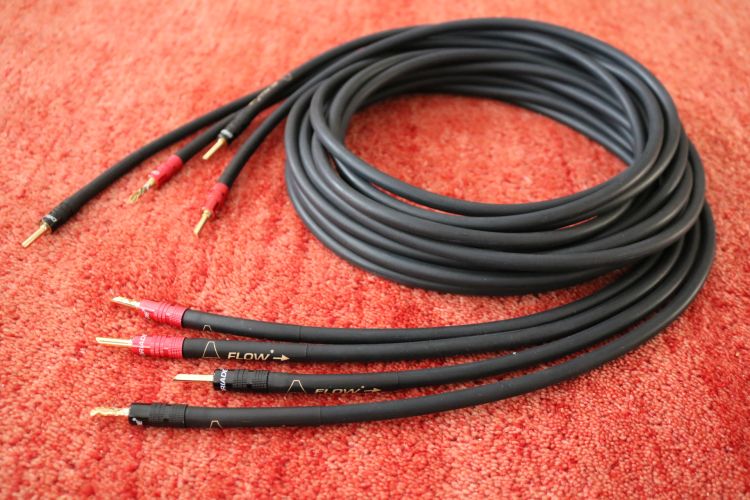
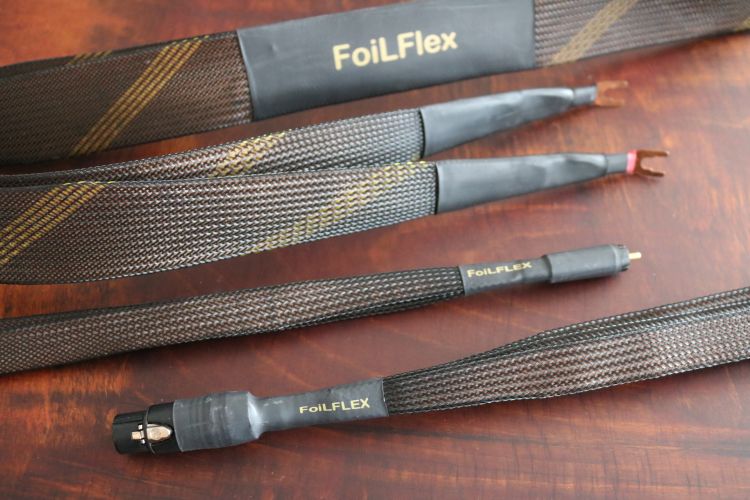
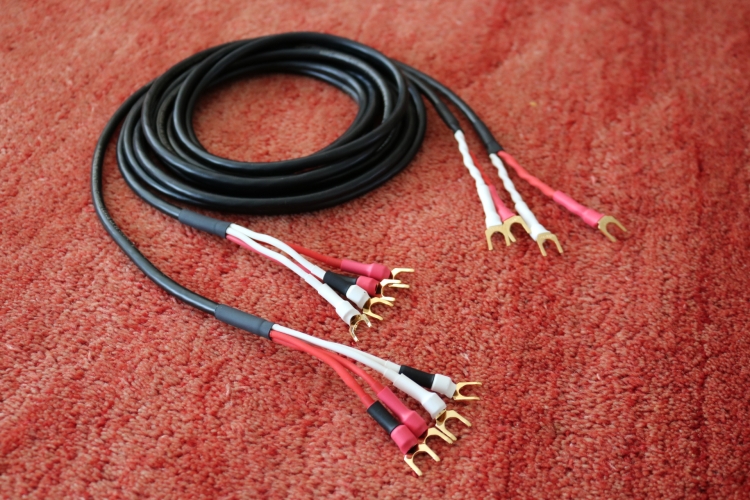
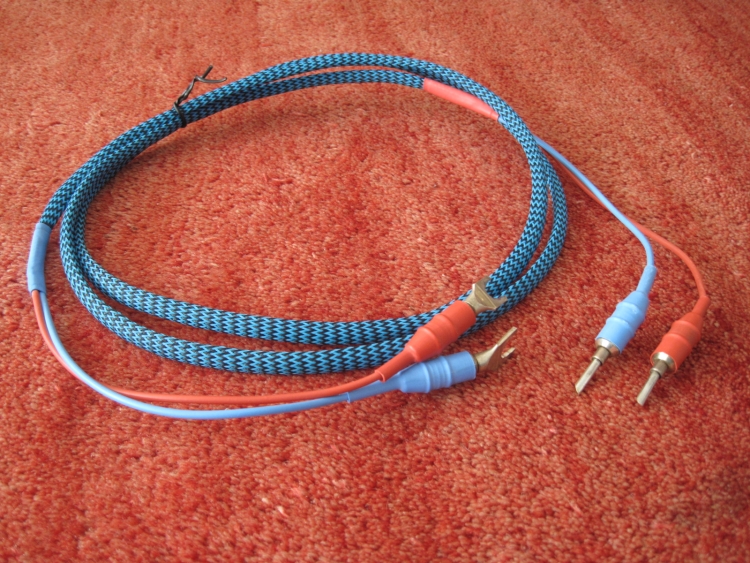
Bonjour Christiaan,
Have you tried the Jorma cables with the ML 15 a?
Have you tried the Origo ?
Best,
JLouis.
Hi JL, yes, I use the Trinity for the Logans as well as the Magicos and it works as superbly as with the Kromas. I have briefly tried the Origo interlink and speaker cables as part of the Marten Mingus Quintet review but while they were more refined I also found them too “luxurious”-sounding. Too smooth and relaxed, for my taste.
Merci Christiaan,
Could you precise me the complete set you use with your ML 15a, interconnect and speakers cables?
Best,
JLouis.
Just look at any recent review to see what I use:-)
Hi, I’m looking for speaker cables that sound quite snappy and organic rather than too analytical.
These new Jorma Trinity seems to worth trying out at home. Do you have any other suggestions in the rougly 1500 euro price category for 2m speaker cables.
Thanks,
Rick
There are plenty of snappy cables but if you are also looking for organic and not too analytical then of all the cables I heard really only the Jorma applies. The others are either too warm/thick/slow or too cool/clean/analytical.
Thanks for the answer, much appreciated.
An alternative might be Triode wire labs, I have a power cord made by them, it sounds snappy and organic, in a quite unusual way.
They are relatively cheap as well.
Hi Rick, I’ve compared a Triode Wire Labs cables with some other such as Echole and LessLoss and recall it sounding quite sweet and even a little stereotypically “tubey” rich. I can’t say that I found it to be very snappy, though.